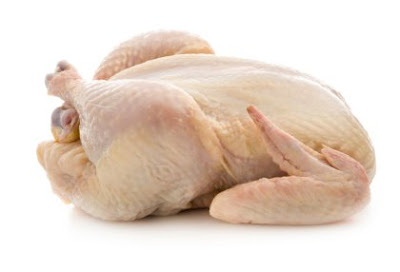Eating Chicken is About to Get Far Riskier

What came first, the chicken or the beef?
If that sounds like a trick question, it is. A way to trick us into serving up some Chinese chicken for dinner!
No, I’m not talking about chicken chow mein, but chickens from China.
Don’t we have enough chickens in the U.S., you might ask? Yes, of course we do!
As part of a trade agreement that started hatching during the Obama administration, a multi-national swap of chicken-for-beef has been in the rotisserie since 2014, when the USDA gave a green light to several Chinese poultry processing plants.
Now, the Chinese chickens are coming (to your) home to roost.
China isn’t a place where you want your food — even your pet’s food — to come from.
It has a long and disastrous history of food contamination problems, so much so that the Chinese equivalent of the FDA just released information on 500,000 cases of food-safety violations. And that was just during the first three months of last year!
But regulators in the U.S. are fully aware of that.
That’s why USDA officials are only allowing cooked chicken to be imported.
And these cooked birds will be making landfall stateside around mid-July — just in time for the peak picnic season.
This deal, however, was really about beef.
In an exchange for being allowed to export our beef to China — something the Chinese halted back in 2003 — we will be taking their chickens.
But as I said, China has a less than stellar record when it comes to food safety.
Examples of what has gone on there where food is concerned include:
- selling rat meat passed off as lamb,
- taking discarded oil (from drainage ditches) and selling it for cooking,
- marketing contaminated baby formula that made hundreds of thousands of Chinese babies sick, killing six, and
- repackaging old meat with new dates and selling it to Chinese McDonald’s and KFC restaurants.
Then, there was the pet-food scandal of a decade ago that killed thousands of pet dogs and cats in the U.S. What was supposed to be an import of wheat gluten turned out to be a toxic chemical called melamine. That wasn’t a mistake, either, but a way to make more money by substituting a much cheaper ingredient.
Now, as we all know, eating food grown and produced here in the U.S. is dangerous enough. Add another layer of risk to it by bringing it in from China, and it’s an open invitation to trouble.
There’s also the fact that China has been plagued with cases of avian flu in its poultry. Will those processing plants halfway around the world cook that chicken well enough to kill all of those pathogens? Could these imports start an epidemic of that bird disease in American hen houses?
These are all questions that can’t be answered, and maybe never will be until something awful happens as a result.
It’s also impossible to say where these Chinese chickens will land. It could be your neighborhood supermarket, your favorite restaurant, the take-out at the mall — no one knows.
So your best bet in avoiding this foreign fowl is to steer clear of any pre-cooked chicken product, be it a ready-to-eat roaster in the supermarket or a can of chicken noodle soup.
Make it a point to only buy raw chicken from U.S. organic-certified producers, and cook up your own chicken dishes instead.
You can even make homemade chicken chow mein!
“Chinese chicken is headed to America, but it’s really all about the beef” Maria Godoy, NPR, npr.org








Recent Comments